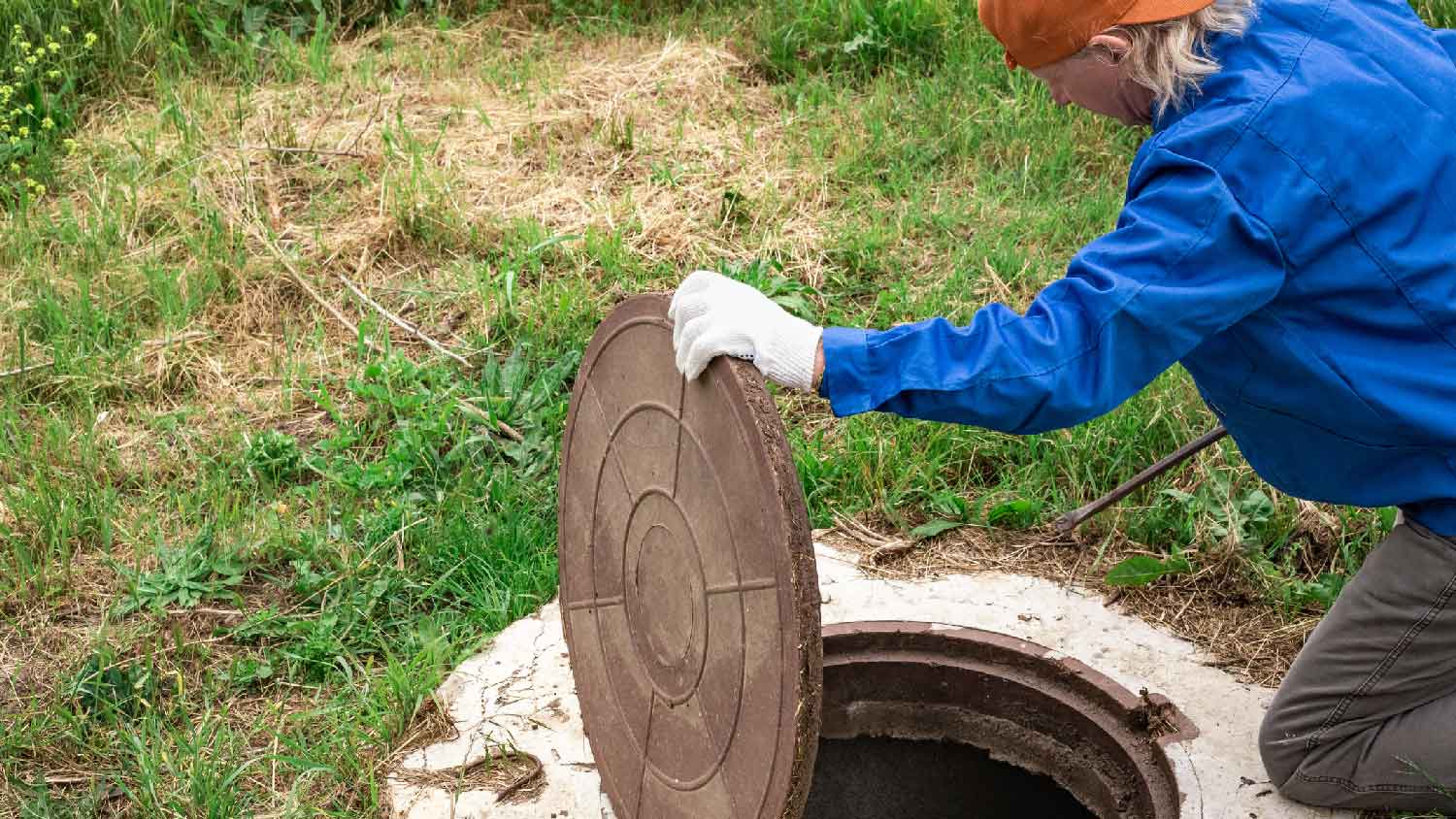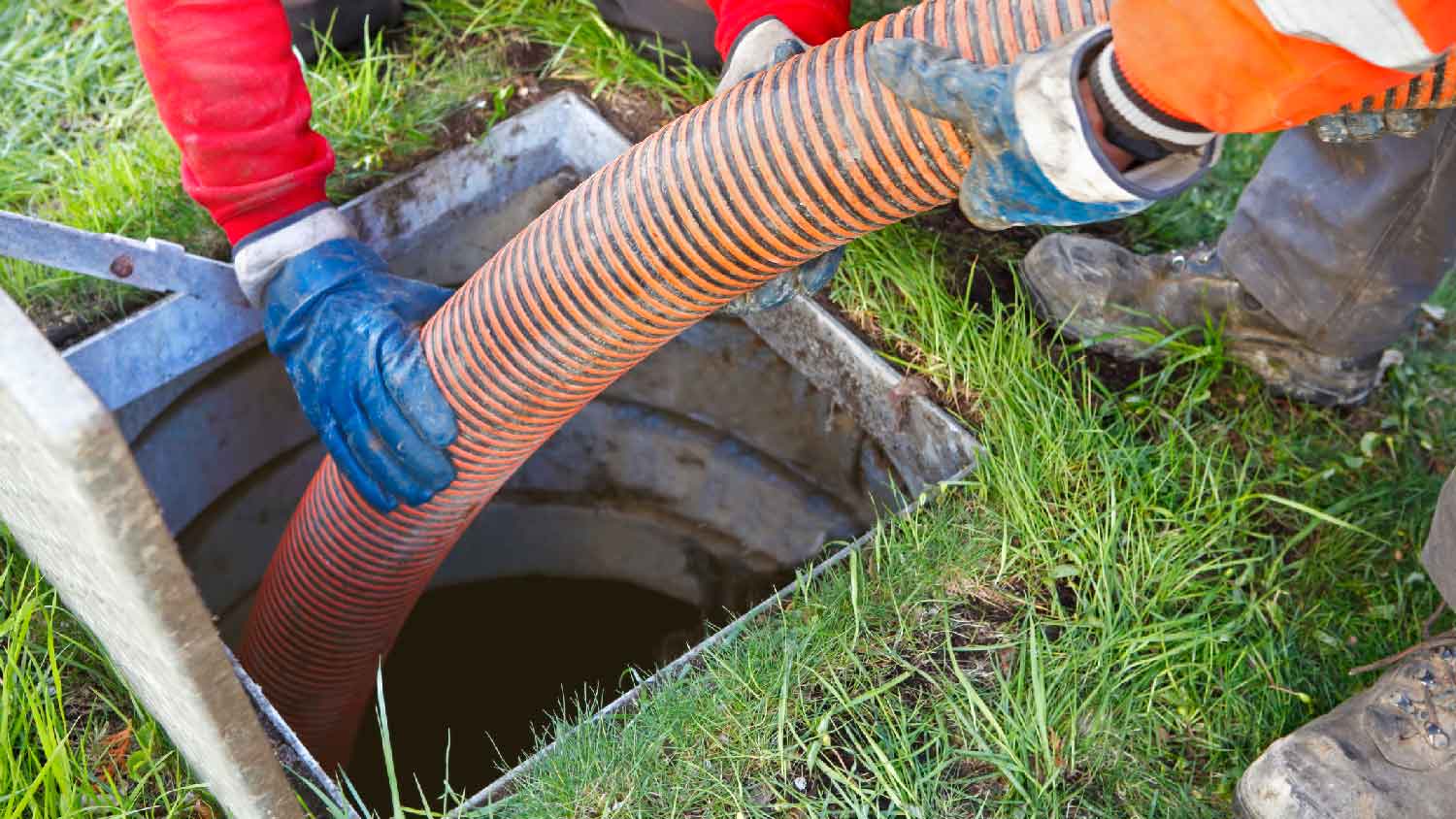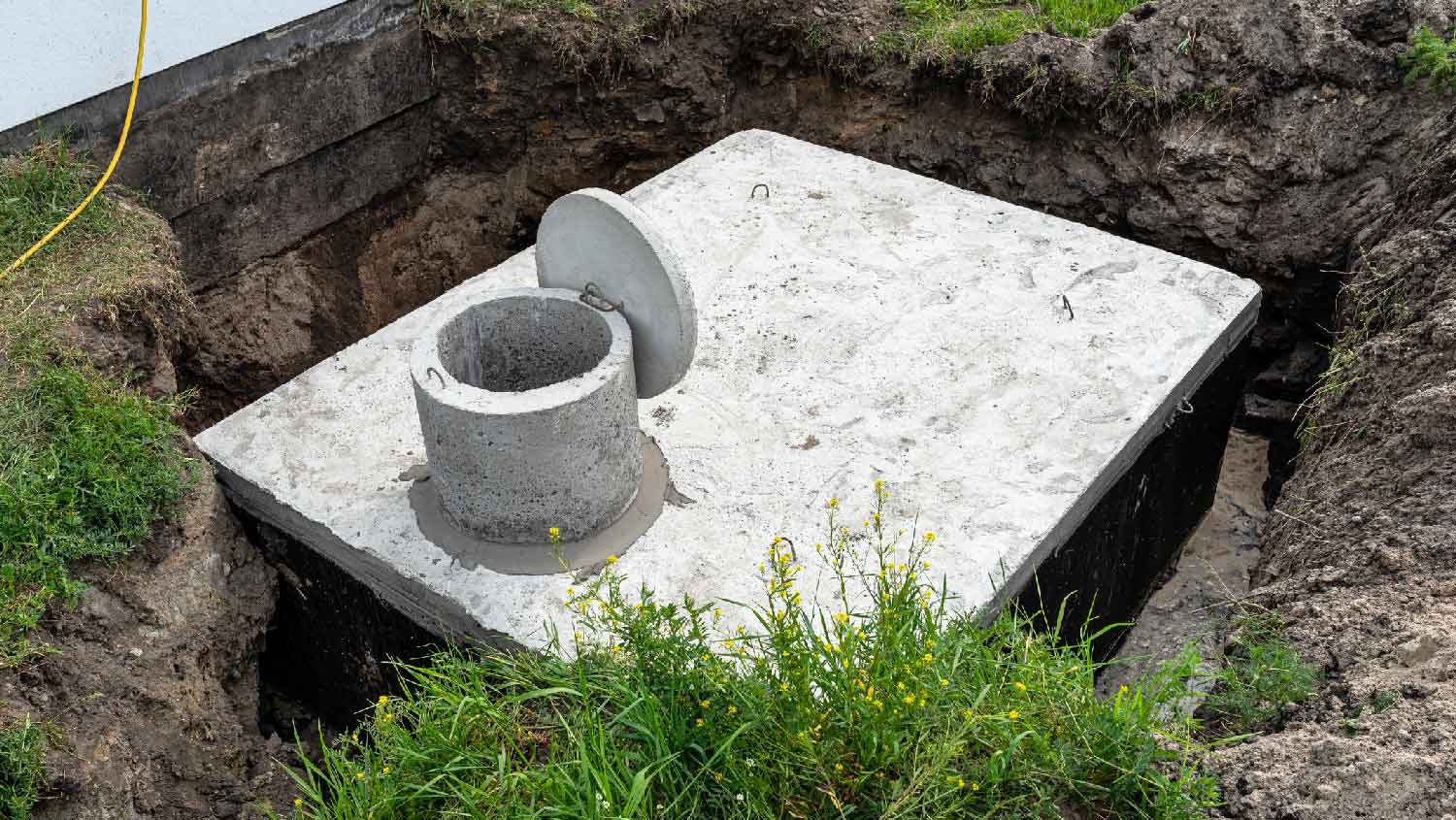
The average cost to connect to a public sewer line can vary depending on the linear foot, piping material, local regulations, and more.
Everyone’s favorite dinner topic: sewage


Cesspits drain wastewater to be filtered by nearby soil.
Cesspools are airtight containers that store sewage underground.
Cesspits carry a high pollution risk, but cesspools can be safely managed.
Whether you’re purchasing a new home or improving your current one, having a cesspit or a cesspool for a sewage system is a big factor to consider. Cesspits and cesspools may sound like the same things, but these sewage systems differ in meaningful ways. Learn about the differences between cesspits vs. cesspools and what they mean for your home.
Although the terms cesspit and cesspool are used interchangeably today in reference to watertight sewage storage tanks, they once represented two kinds of sewage management systems. The two systems have significantly different designs, and as such differ in terms of function, construction, pollution hazards, and maintenance.
| Type of Difference | Cesspit | Cesspool |
|---|---|---|
| Function | Drainage | Storage |
| Construction | Fiberglass | Brick |
| Pollution | High risk | Low risk |
| Maintenance | None | Regular pumping |

Cesspits were once a common solution for homes that weren’t served by a main sewage system. They were meant as a drainage system that could dispose of wastewater collected from the home.
Cesspools, in comparison, are enclosed and watertight storage tanks for sewage. They have a pipe used to collect sewage and release accumulated gasses, but they aren’t meant to treat or drain wastewater. Instead, cesspools hold sewage until it can be pumped and removed for treatment elsewhere.
Sometimes mistaken for a well, a cesspit is usually made by hand and has a cylindrical design composed of brickwork. At approximately no more than 6 feet deep and 3 feet wide, cesspits aren’t designed for much holding capacity. To allow wastewater drainage, bricks are placed about 2 inches apart. If it’s made from concrete or plastic, a cesspit will have perforations to allow wastewater to seep out. A concrete or stone slab is positioned over the opening of the cesspit to function as a lid.
Cesspools were once also made with bricks, but modern cesspools are primarily made of fiberglass as it allows for better sealing and minimal air pollution. These rectangular tanks are buried underground and sometimes fitted with an alarm to notify you that it’s at capacity. The size and capacity of a cesspool varies depending on the number of average occupants of the home, but they’re usually between 8 and 20 feet deep and have a capacity of between 4,760 and 12,000 gallons.

The pollution hazards of cesspits are a primary reason why they’re no longer commonly used and are often prohibited. Sewage can contain bacteria and viruses, and while many pathogens are filtered out, allowing wastewater to leach out untreated and percolate in the surrounding soil can lead to pollution in nearby water sources such as lakes, rivers, and coastlines. Not only can this cause issues for nearby wells, but it can also instigate algae blooms that damage local ecosystems.
Cesspools are watertight and sealed off, but storing large amounts of sewage underground always carries a risk of soil and groundwater contamination, which is why some areas have made cesspools illegal. Regular cesspool pumping and general maintenance are necessary to avoid leaks or overflowing.

Cesspits are designed to handle waste and don’t require any regular maintenance. They don’t technically cost anything to maintain, but they should be replaced with either a cesspool or septic tank by a local septic installation pro if you’re unable to use the main sewage system.
To avoid overflow, leaks, and backups, cesspools must be maintained and pumped on a regular basis. Depending on its capacity and demand, pumping could be as often as once per month to every 6 months. The tank must be emptied by a local professional, and you can expect to pay an average of $400 for each service.
From average costs to expert advice, get all the answers you need to get your job done.

The average cost to connect to a public sewer line can vary depending on the linear foot, piping material, local regulations, and more.

The average cost to connect to a public sewer line in Columbus, OH, depends on the linear footage, piping material, local regulations, and more.

Roto-Rooter plumbing services can help you unclog drains, fix leaks, or provide remediation services after a flood. Learn the average cost to hire a local specialist and how they can help you.

Septic distribution box replacement costs aren’t low, but it’s an item that causes obvious problems when not functioning correctly. Learn what factors impact your budget.

Deciding between a concrete and plastic septic tank involves considering both long-term and short-term variables. Here's what you need to know about both types.

Septic systems make use of septic lateral lines to disperse treated waste into the soil. Learn about the process and the types of lateral lines in this guide.